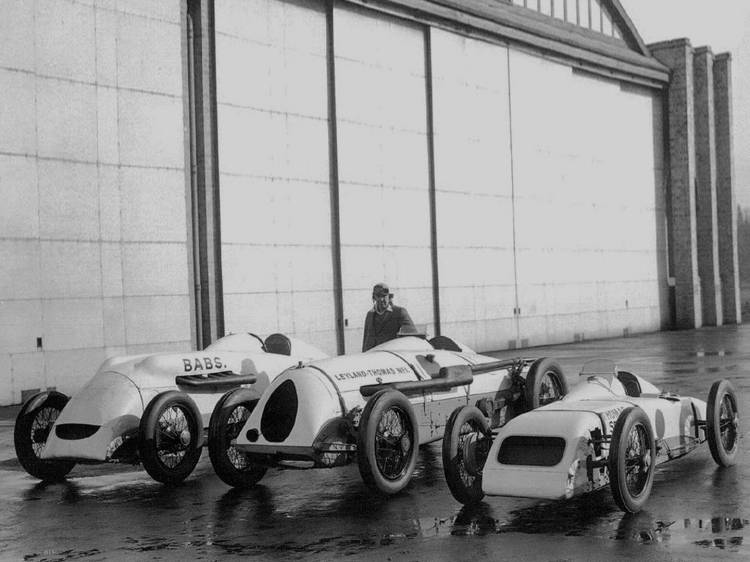Imagine an engineer with all the skills and self-confidence of MacGyver and you will have a pretty close portrait of the protagonist of this story. We are talking about the man who in the twenties broke the speed record in a car he bought himself and tuned up himself with the help of a friend: something that, at that time, was strange since all these milestones were behind them. large financing. Parry Thomas was a brilliant man who lost his life trying to break the world speed record.
The feats that Koenigsegg, Bugatti and company perform today have nothing to do with those that were experienced in the happy twenties. At the time, Parry Thomas was one of the chief engineers at the Leyland Motor Corporation. After World War I He designed, with the help of his assistant, the Leyland Eight: a luxury car that had to stand up to the Rolls-Royce models.
Welcome ‘Babs’
When he was testing it at Brooklands Circuit the sensations were such that Parry quit his job to become a driver and race engineer. The move did not go bad because in 1926 he became the first person to exceed 273.5 km/h, a figure that today seems derisory when we talk about speed records. In the 1920s it was quite a milestone because, in addition, it broke the previous mark by more than 32 km/h.
And, as we said before, it did so by competing against better-financed teams. A year after flying in his vehicle, Malcolm Campbell made that coveted speed mark his own in a model on which he had spent ten times more than Parry’s investment in ‘Babs’. Who was ‘Babs’? The car he had bought from Count Zborowski (who was, by the way, a racing fanatic) for 150 euros at the time: a Highham Special.
The fastest car in the world
This vehicle was powerful and yet very crude. Parry got to work modifying and fine-tuning it: he lowered its height, added a radiator, added new pistons, a multi-disc clutch that he had designed and built himself… To this we had to add the Liberty L-12: a 27-liter V12 aero engine capable of producing 400 hp, power passed through a four-speed gearbox to the rear axle via a chain drive.
A tragic and sad ending
The result was a car that had become quite the speed record hunter. Parry achieved the speed record on the beach of Pendine Sands (Wales), the same one where Malcolm Campbell had done the same in 1924 and 1925. On April 28, 1926, it exceeded 273.5 km/h covering a distance of 9.65 kilometers. The brand was his property for almost a year until his ‘rival’ took it from him.
Parry made some changes to ‘Babs’ to regain that honor, but an accident cut short his hopes. On March 3, on the same beach where Malcolm Campbell had improved his result weeks before, he lost his life trying to beat (once again) the world speed record. His memory remains alive in motor history.
Images: Wikipedia





